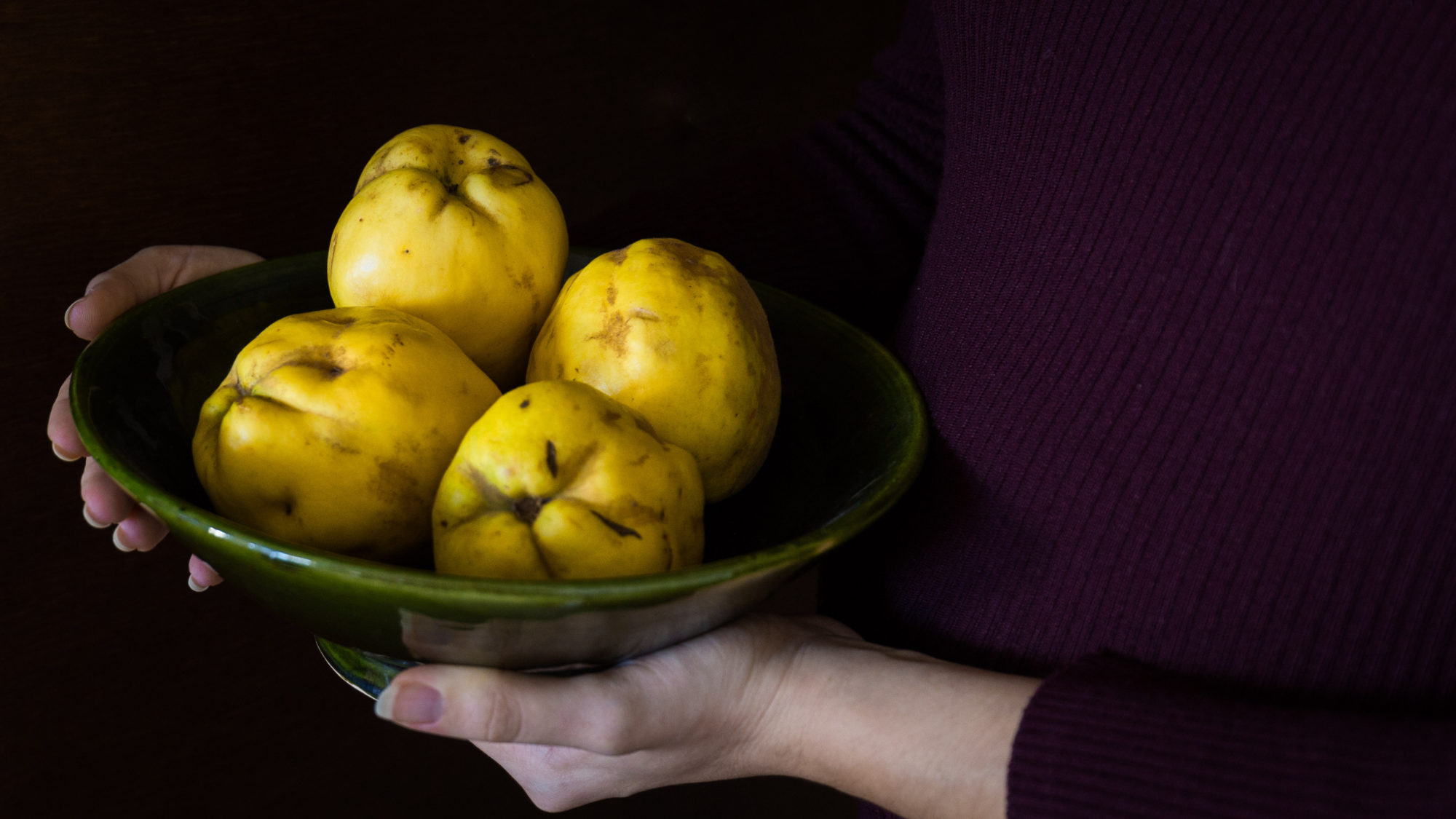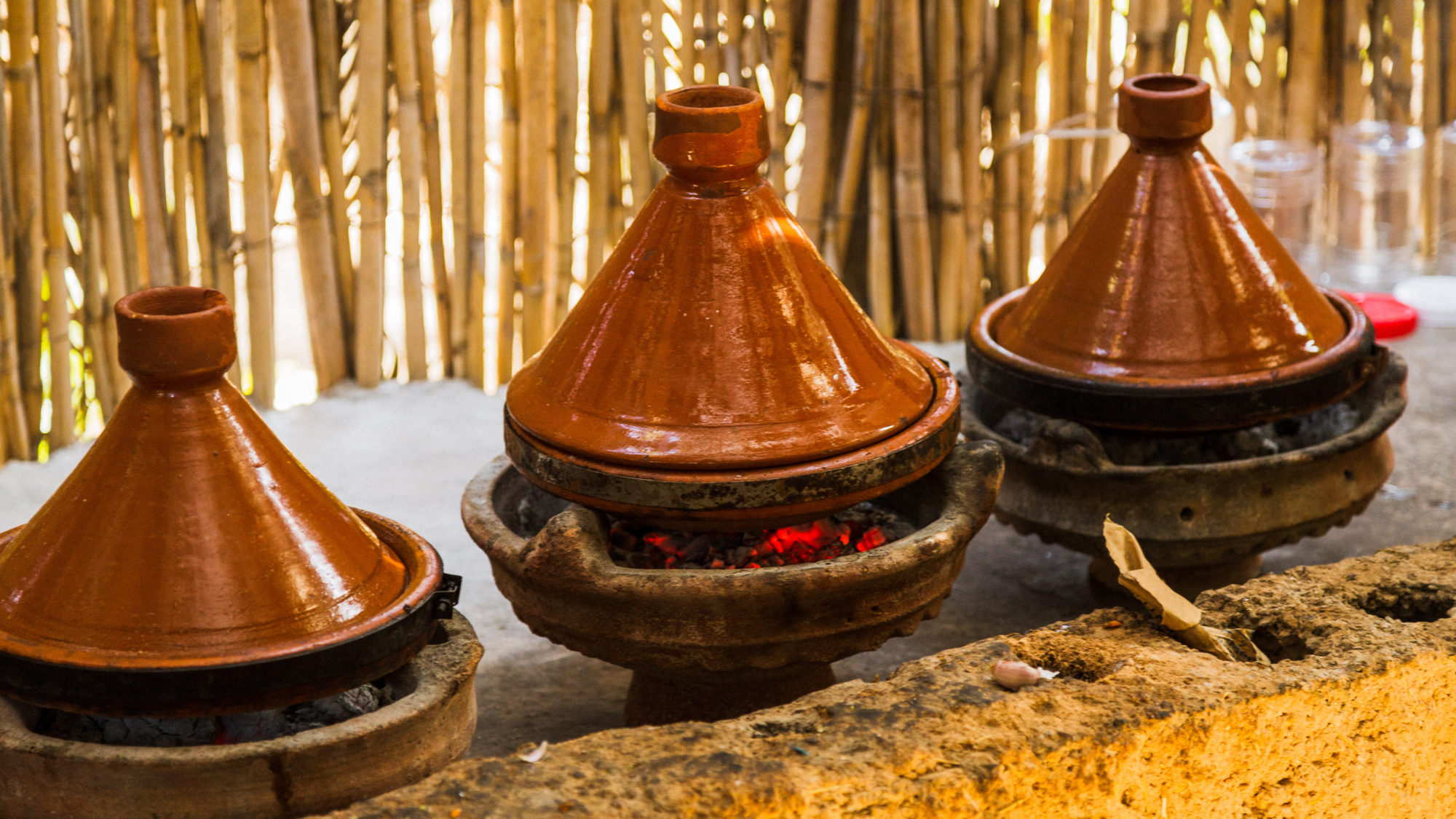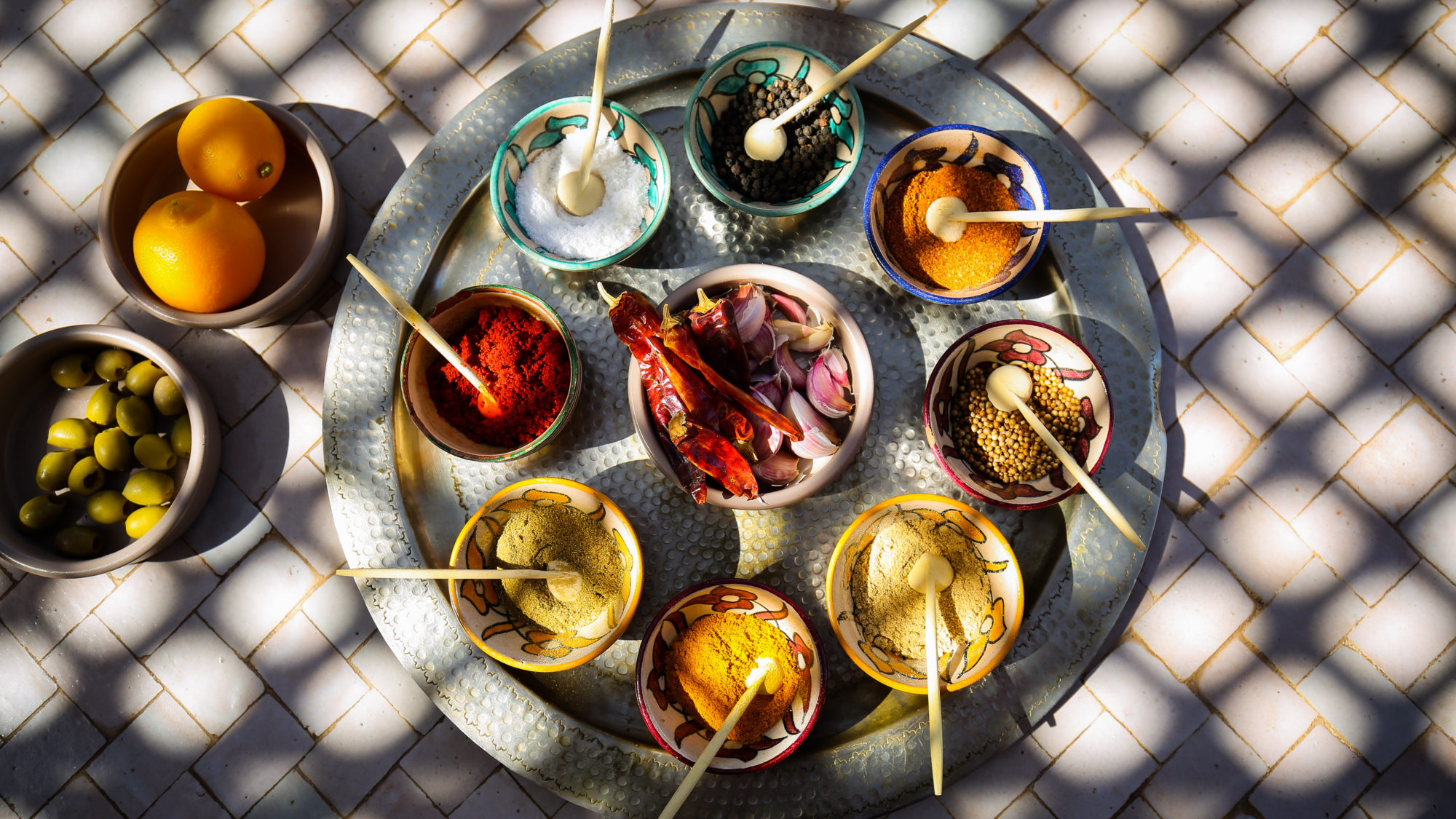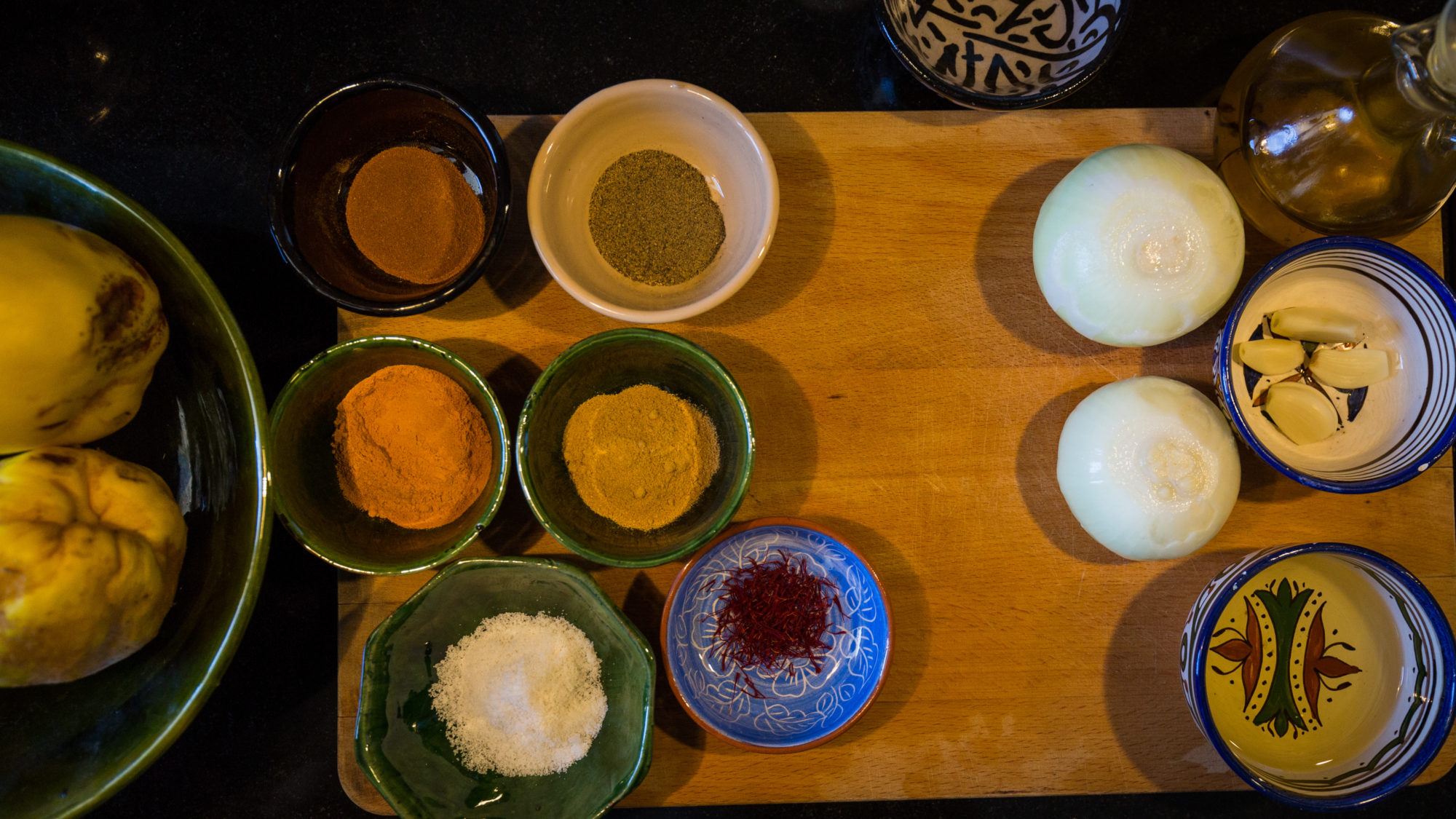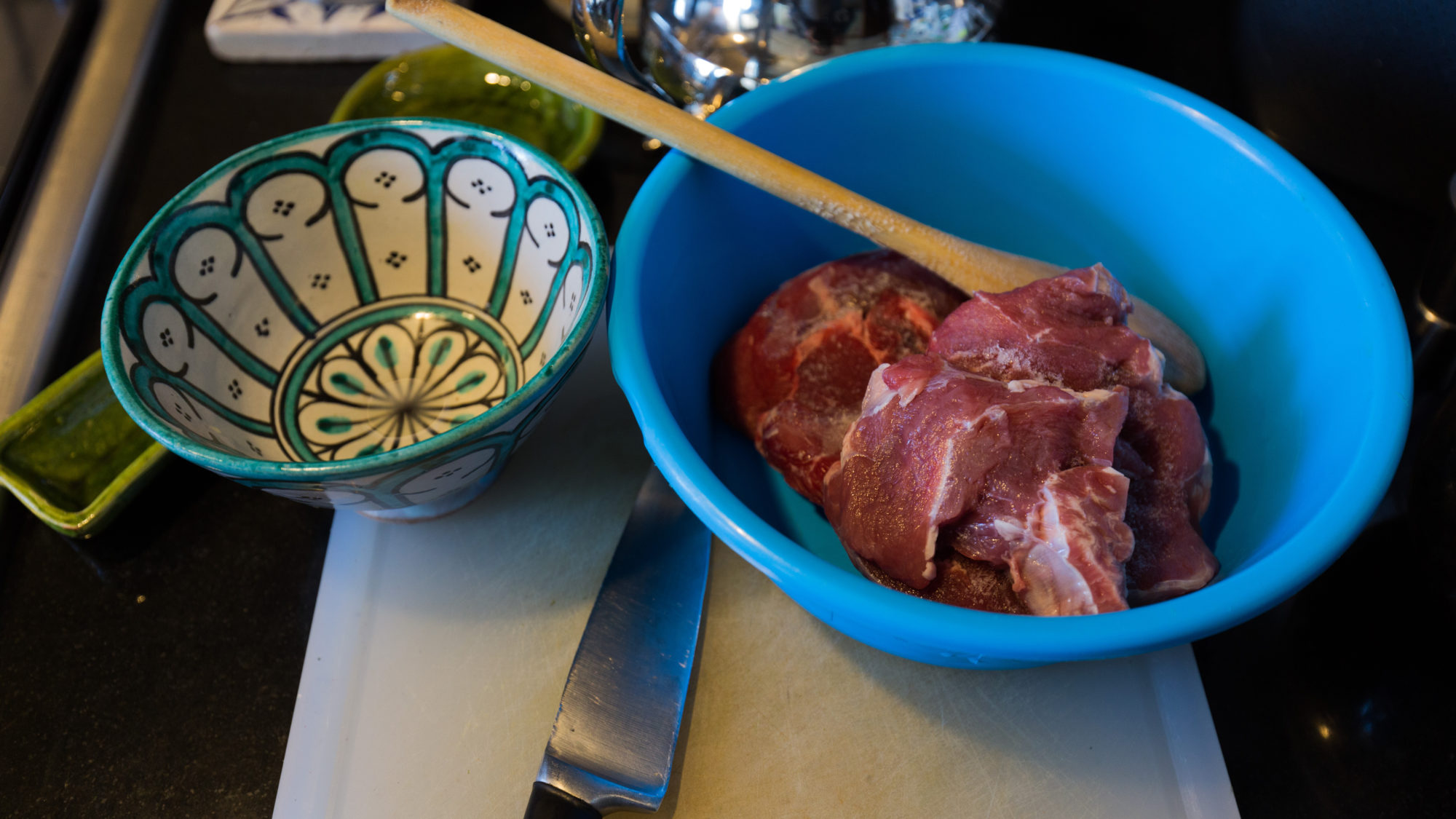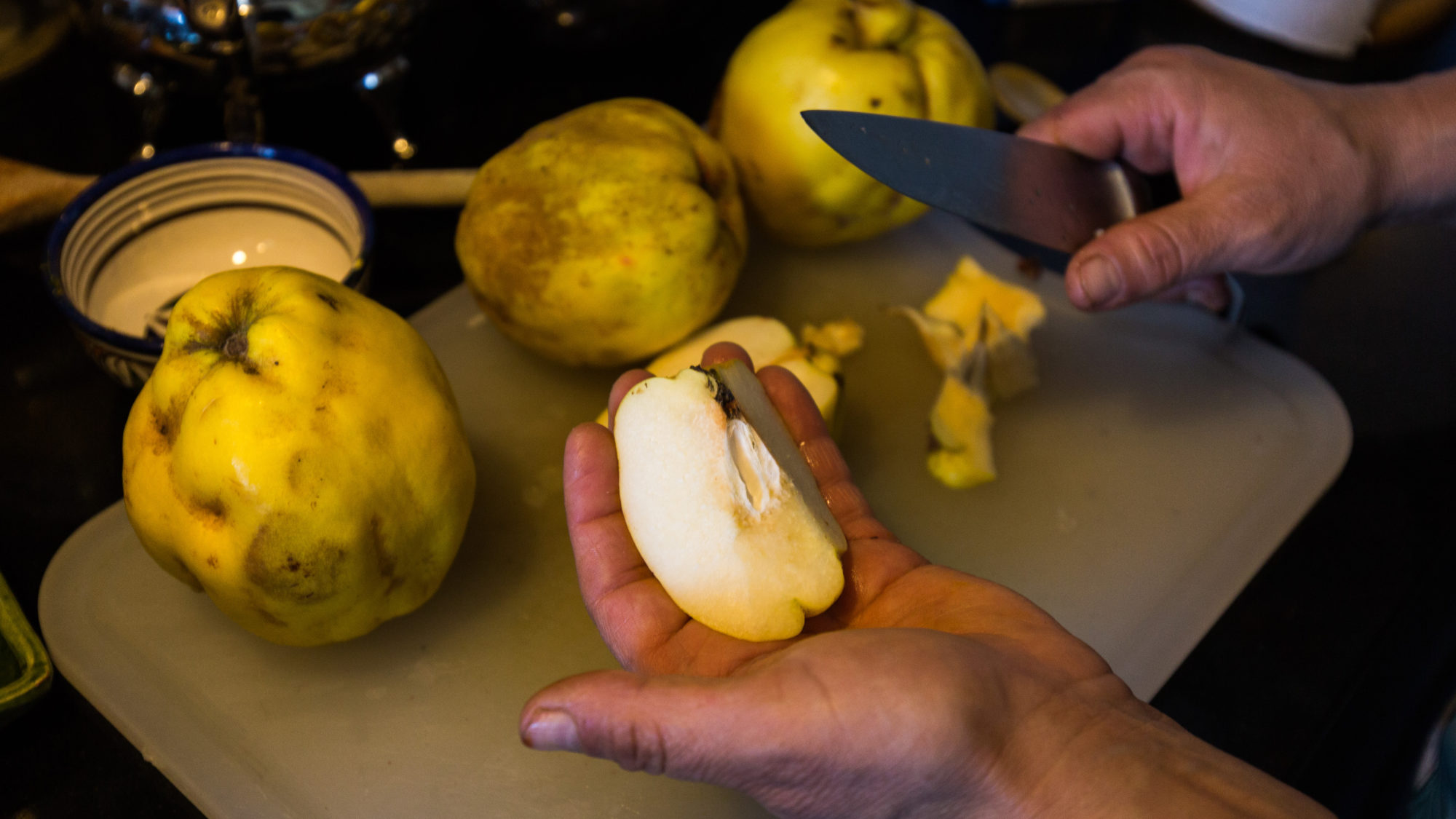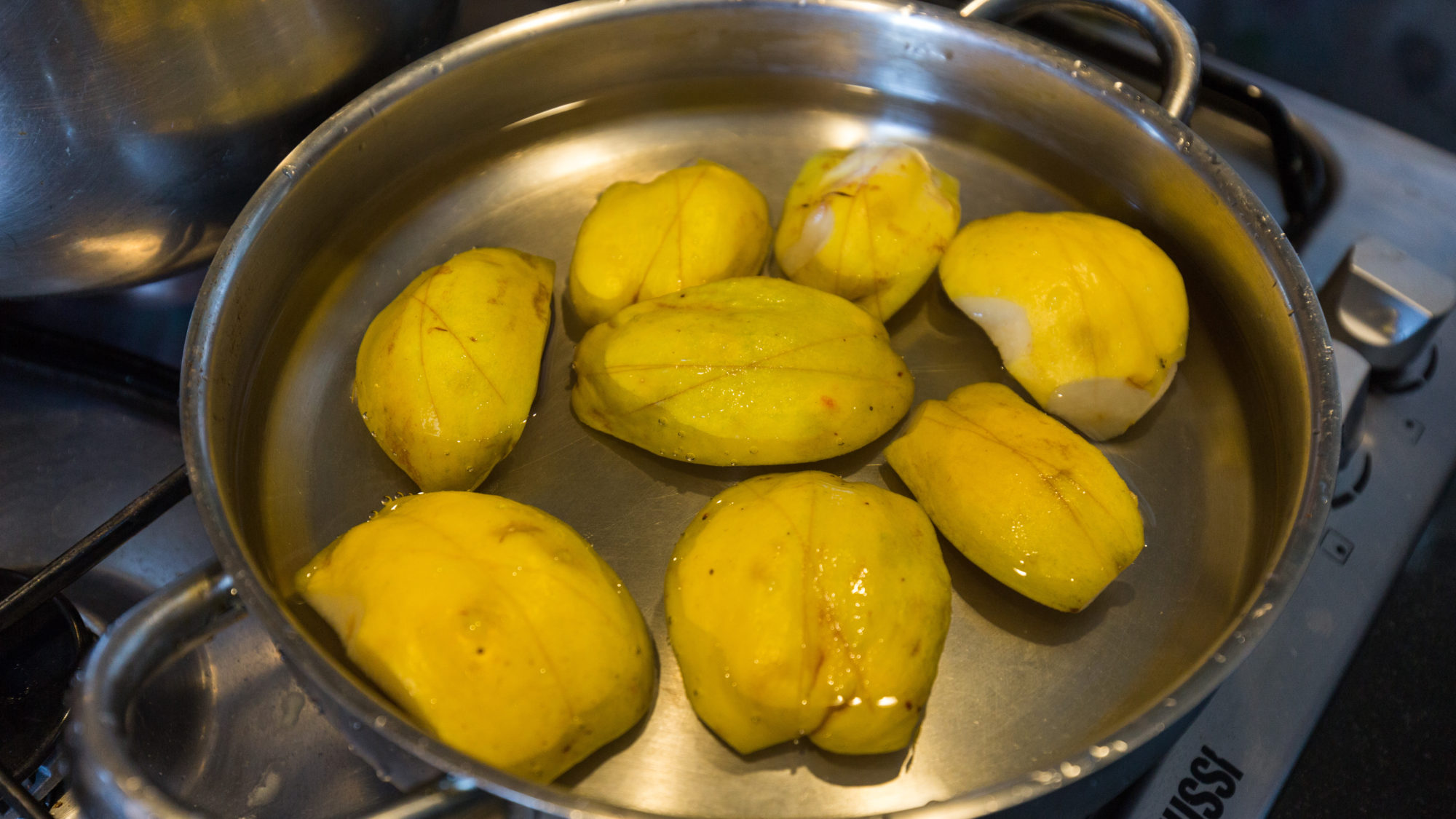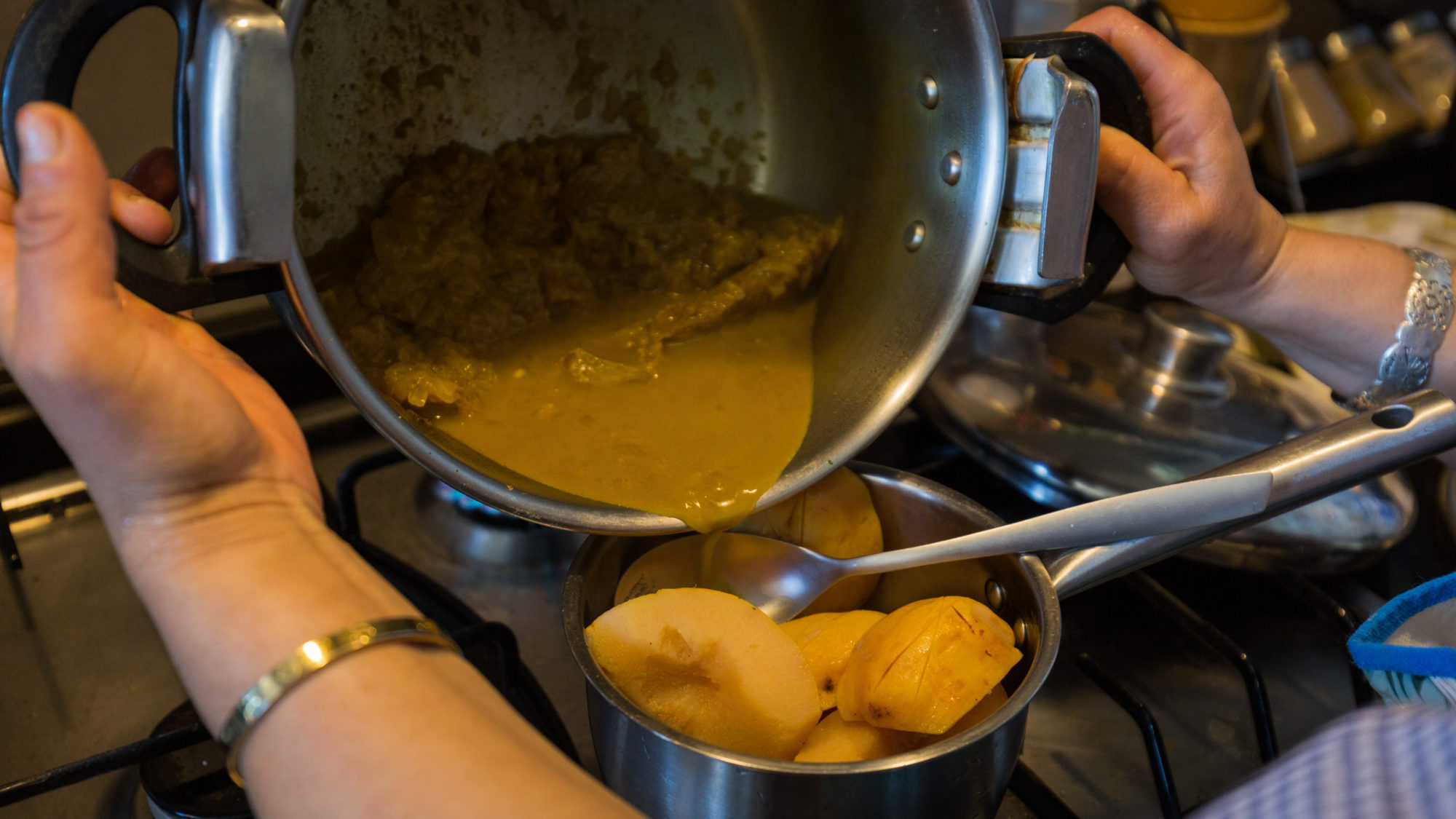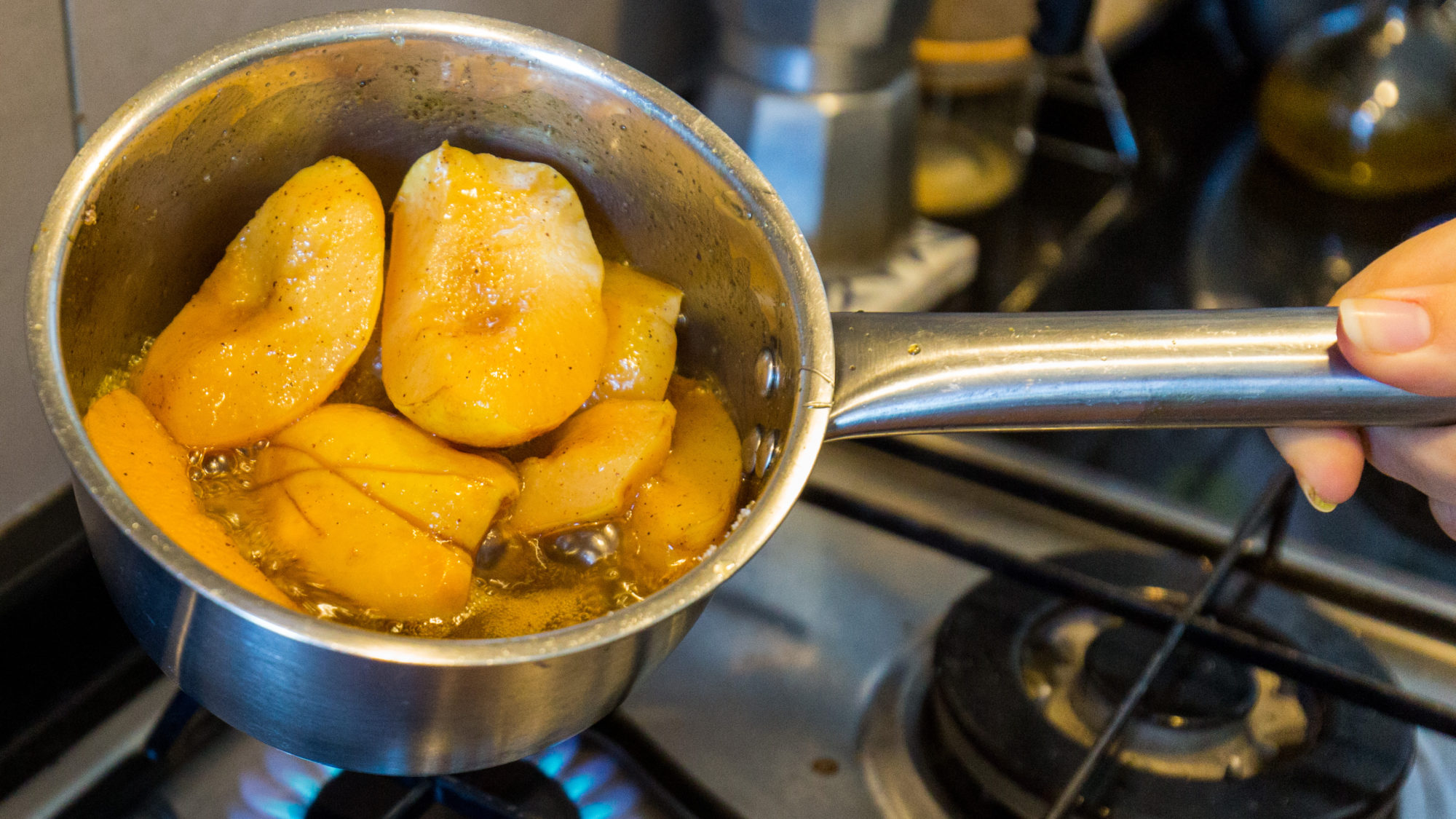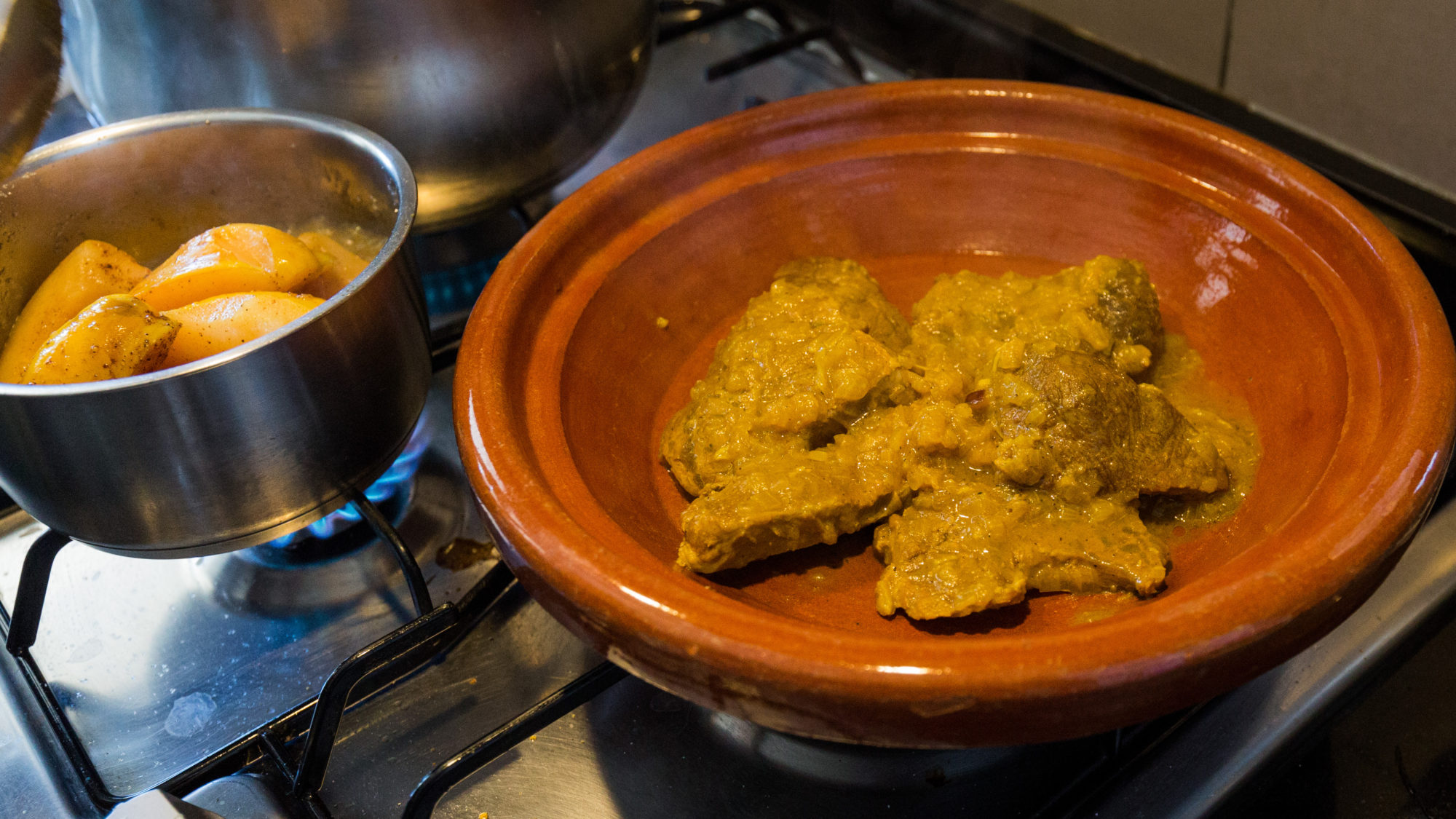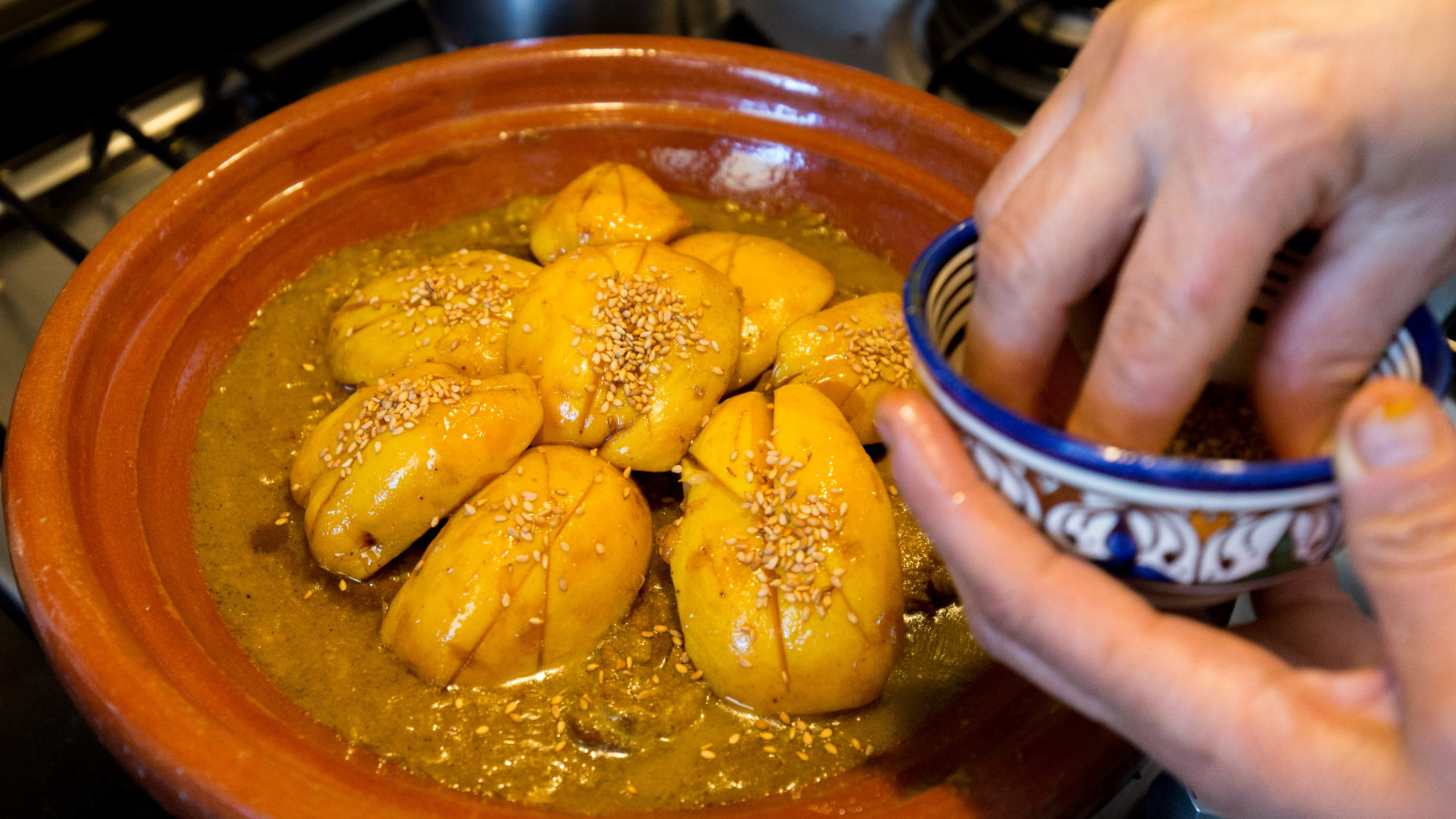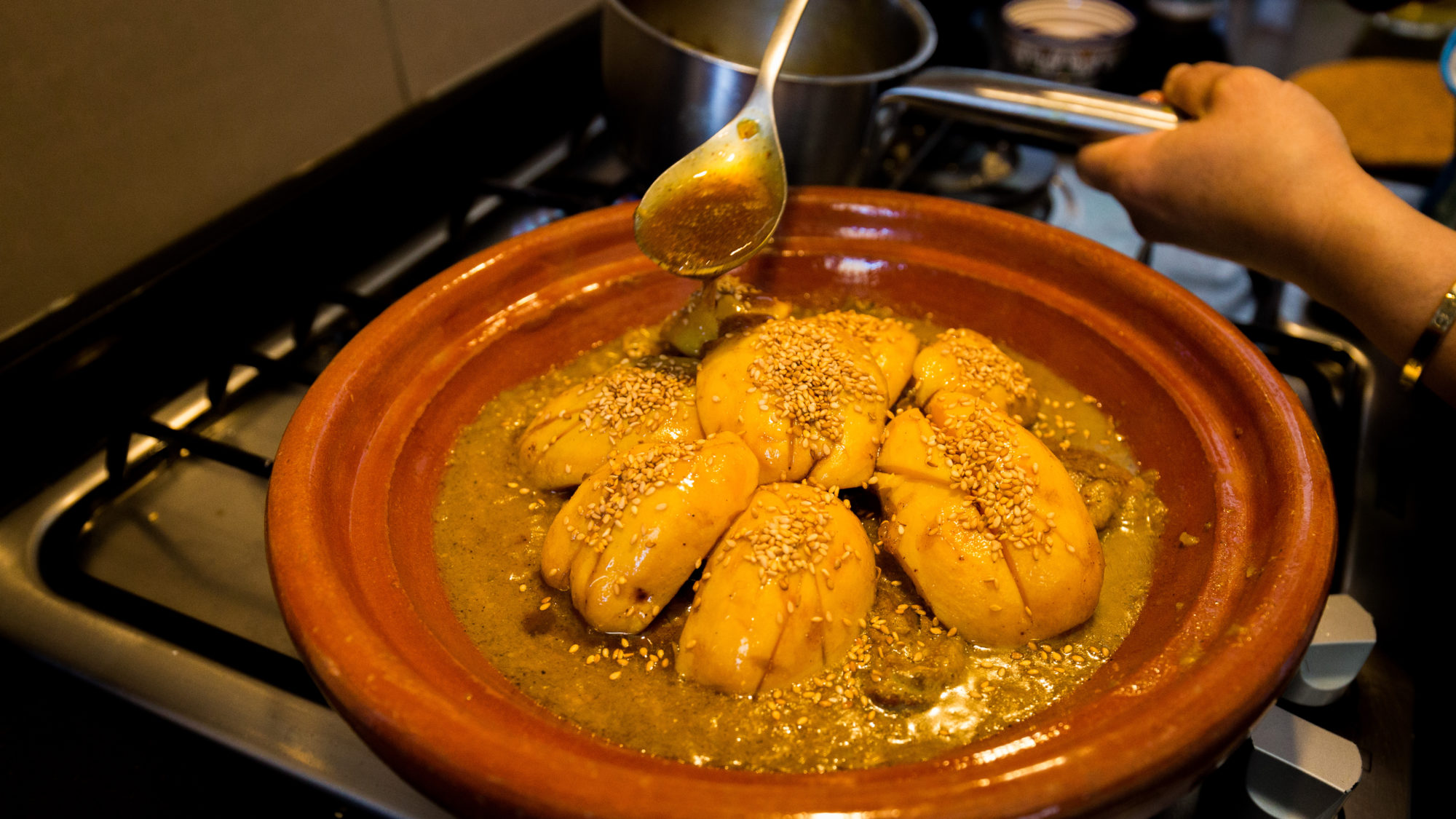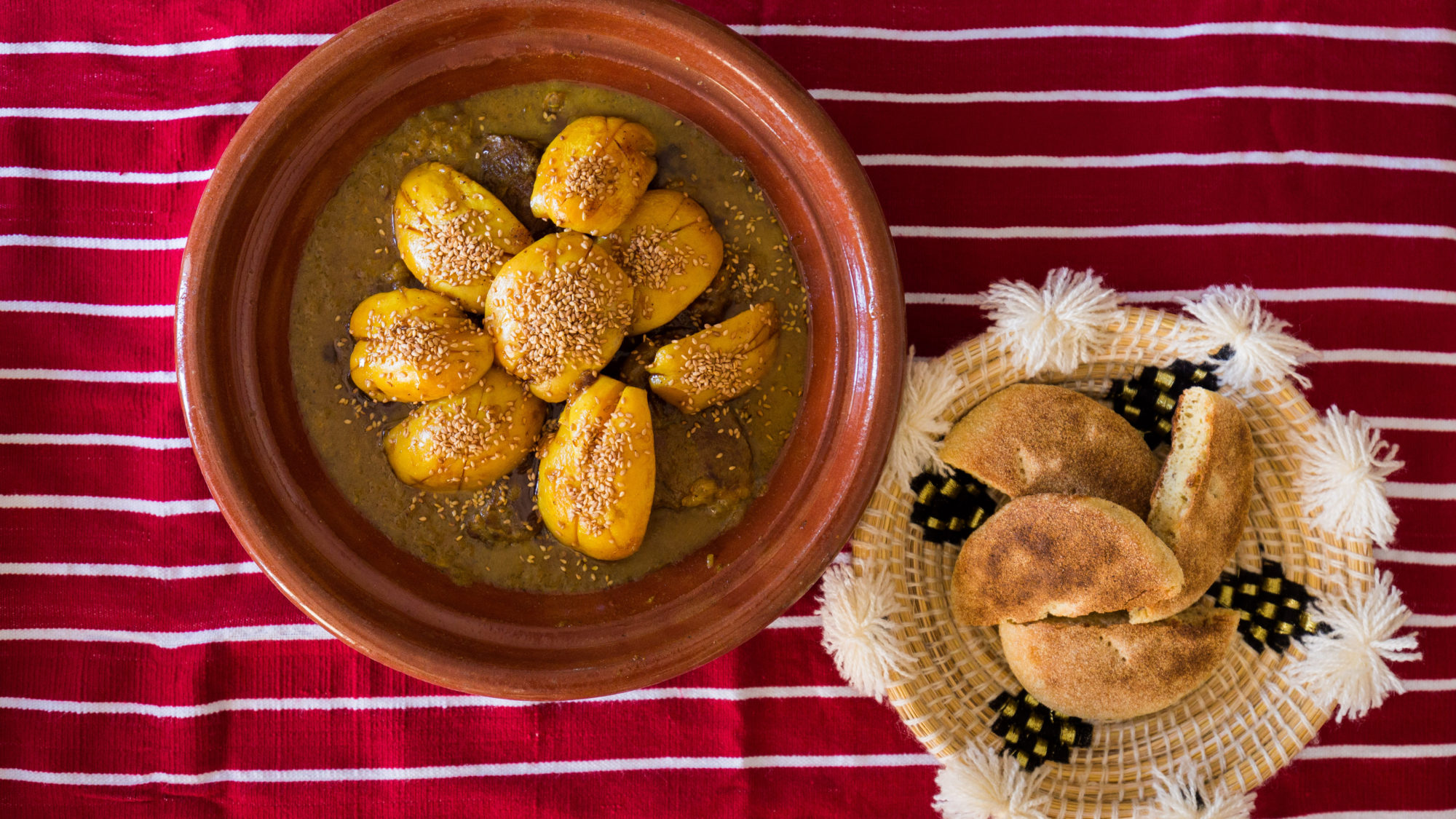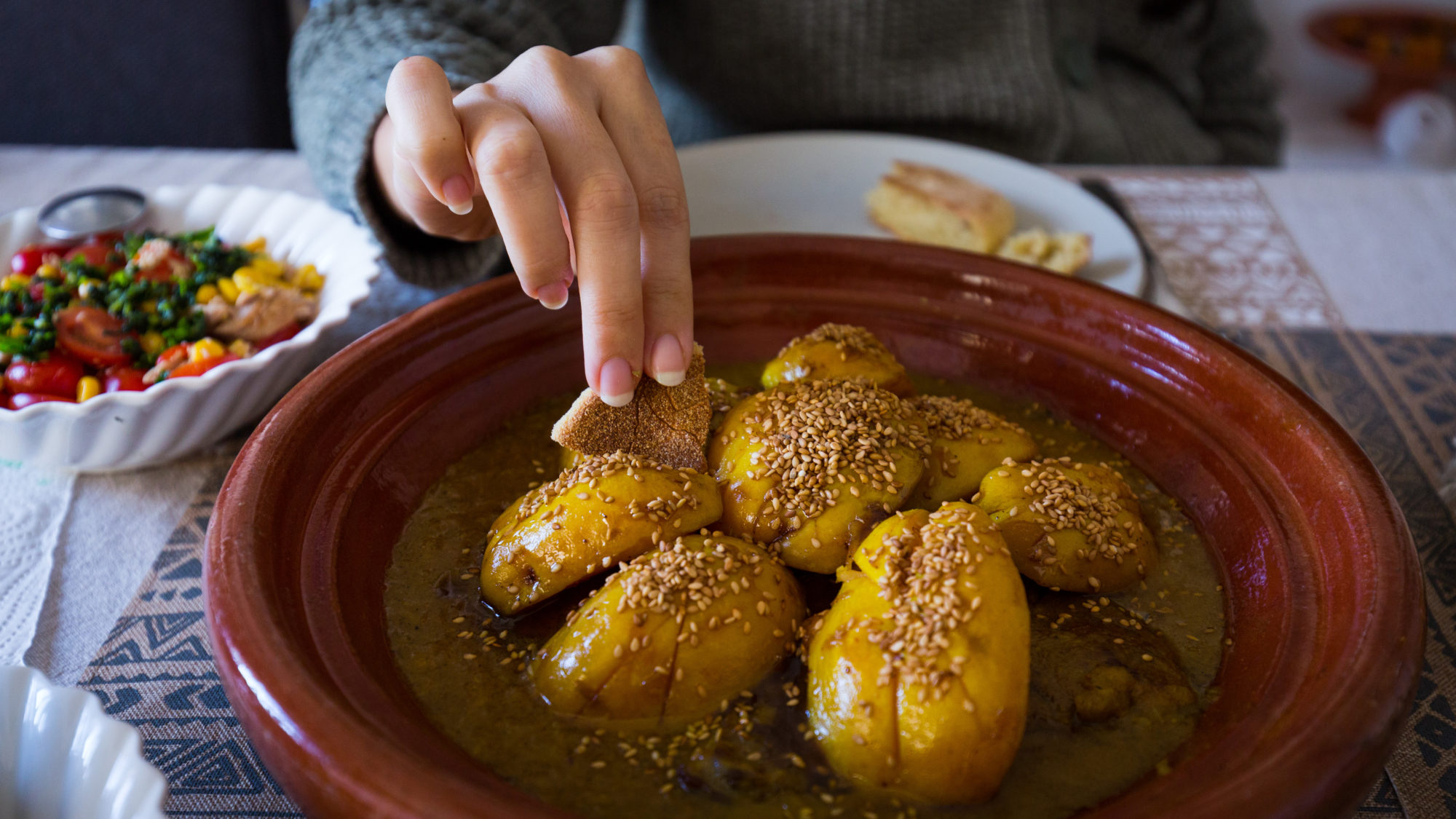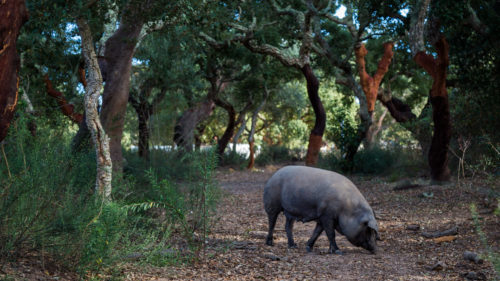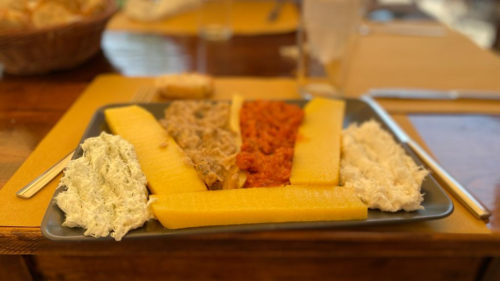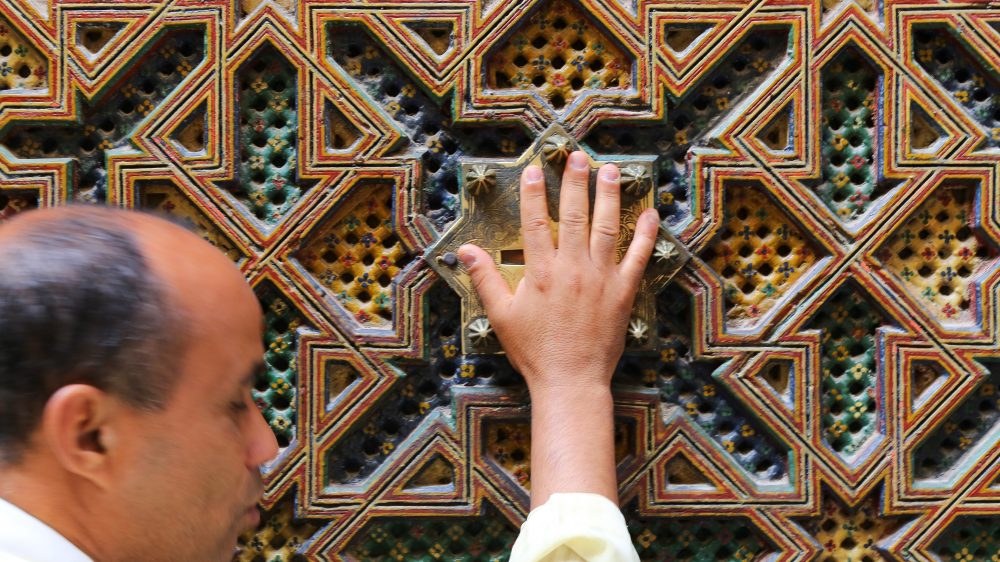Happy Coincidences: A Winter Quince Tagine Recipe
If you got here by searching Google for “what the hell to do with a quince?”, you’re in luck. As the winter solstice approaches and we settle in for several months of short, cold days and even colder, longer nights, thoughts turn to fires cackling away in chimneys, and slowly bubbling pots of stews and soups in the kitchen. Morocco’s variation on these comfort foods is the tagine, the word both for the name of the dish as well as the earthenware round pot it’s traditionally cooked in.
Most people’s first encounter with a tagine will be djadj m’qalli: stewed chicken with preserved lemon and olives, which is a dish as ubiquitous here in Morocco as a burger and fries in the US. But tagines can take many forms, all being variations on a basic riff which takes an animal protein as the base (lamb, chicken, beef, or even fish, if you’re on the coast), cooked with fruit and spices to provide either a savoury, bitter counterpoint to the meat (for which preserved lemons work wonderfully), or alternatively a sweetness, such as beef with prunes, or chicken with preserved apricot.
Unfortunately for the good reputation of the tagine in the wider world, that is usually the full spectrum of what you can expect to find in Moroccan restaurants in Morocco, most of which cater almost exclusively to foreigners. Because, as any Moroccan will tell you, the best recipes are found in the home and it’s rare that Moroccans will venture out to pay in a restaurant for what is better consumed at their own dining table. So it wasn’t until I married into a Moroccan family that the doors of my tagine repertoire were blown wide open. Enter the Quince.
The Greeks called them Kydonian Apples, and these misshapen, fleshy, bright yellow fruit which ripen in the fall were believed in antiquity to be symbols of love and fertility. One of the twelve labours of Hercules required visiting the gardens of the Hesperides where, “the daughters of Nyx guarded the Golden Apples beyond Ocean in the far west of the world”. Pliny the Elder pinpoints Lixus, outside present day Tangier, as the location of these gardens; and I humbly submit to the jury that these golden apples were none other than quince.
For me, the quince represents that wonderful intersection between Mother Nature and human innovation, as the fruit is astringent, pulpy, and really not enjoyable when eaten raw. Hats off to whoever figured out that by slow boiling and adding a sweetener, you’d achieve a wonderful result, retaining firmness better than cooked apples, with an ever so mellow note of sour at the end, and an utterly unique and delicious flavour.
Back home on the Iberian Peninsula, my only acquaintance with quince was dulce de membrillo, a quince jelly that pairs wonderfully with the aged manchego cheese of the interior of the country, and with the dry, fortified sherry wines of the south. So discovering the subtle mix of flavours between meat and quince has been a pure delight. And now, as we’re in full blown quince season, I’d like to share with you my favourite tagine recipe featuring my favourite odd-ball fruit.
L’Ham B’Sferjil – Beef Tagine with Quince
For 4 People
Tagines are the perfect recipes for the multi-tasker, as you let the stewing do most of the work while you can tend to other chores, and the complexity of the flavours belies the fact that a delicious tagine is not all that hard to make. Like good trip planning, a good tagine is the right blend of the right ingredients added in at the right time.
While the tagine pot is the traditional (and more entertaining) method to prepare this dish, Moroccans are no strangers to modern practicalities and appreciate a short-cut as much as anyone else, so these days the pressure cooker has replaced the terra-cotta pot as the major utensil in the Moroccan kitchen. At home we like to use the pressure cooker to cut down on the longer task of stewing the meat, transferring to our favourite and well worn tagine pot to finish off and serve.
Ingredients:
- 600 grams of stewing beef or lamb, cut into large chunks
- 2 firm fist-sized quinces, unpeeled
- 2 medium sized onions, preferably one yellow, one red, minced
- 2 cloves of garlic, grated
- 5 tablespoons of vegetable oil, preferably sunflower oil
- 4 tablespoons of Extra Virgin Olive Oil
- 2 teaspoons each of powdered ginger & turmeric
- A few pinches of cinnamon
- If you have it, a pinch of threads of saffron, better if it’s saffron from Taliouine
- Cane sugar and honey to taste
- Black pepper & sea salt
- Sesame Seeds
Preparation:
– First, set the meat to stew. Toss the minced onions into a pot on high heat with the sunflower oil, stirring until browned. Toss in the chunks of beef, browning slightly for a few minutes before adding ginger, turmeric, plus a few pinches each of black pepper, cinnamon, and salt, ending with crushing some threads of saffron between your hands into the pot for that extra bit of Baraka. Turn the meat a few times, before adding the grated garlic cloves into the mix for another minute. Add water to cover the mix completely to above a few centimetres, and put a lid on the pot to stew. Leave to stew for 30 minutes if you’re using a pressure cooker, or an hour in a normal pot.
– Then, set the fruit to stew separately. While your tagine base is stewing, rinse the quince thoroughly to remove any dirt and the thin fuzz from the skin, and cut them into quarters, removing the seeds just as you would with a normal apple. With your paring knife score each quarter with an “X” over the skins. Place immediately (so that they don’t brown) in a saucepan with a few centimetres of water and boil, partially covered over medium heat until tender, about one hour.
– Once the beef is tender, remove cover and keep the mix bubbling away over medium heat to help reduce the sauce a bit. Correct the seasoning with a pinch of salt, followed by a half a teaspoon of sugar.
– Once the quince are cooked (they should be soft but the skins still firm), drain the water from the pan and transfer the fruit to a smaller pot with a lid, keeping the quince at low heat.
– To the quince pot, pour in a bit of the tagine sauce, followed by two tablespoons of sugar, a teaspoon of cinnamon, and a few tablespoons of honey, and continue to cook the quince, bringing the heat up adding a bit of water and a few tablespoons of olive oil to make sure the fruit don’t stick to the pan. Cook uncovered over medium heat for about 10-15 minutes or until the reduction sauce caramelizes the quince.
– Arrange the beef chunks in a tagine pot, adding the remaining sauce on top, then arrange the quarters of quince over that to cover the beef, garnishing with a sprinkling of sesame seeds before drizzling the remaining syrup on top.
– Serve with warm slices of baguette bread or traditional Moroccan khobz if you have it.
Tagines are served family style in the middle of the table and everyone digs in from the communal dish. Eating with your fingers is not only allowed, it’s encouraged. B’ seha w raha!
When he is not concocting tagines, Sebastian can be found cooking up great Moroccan itineraries, seasoned to taste. Send him your finished quince tagine photos or get in touch to start planning.
